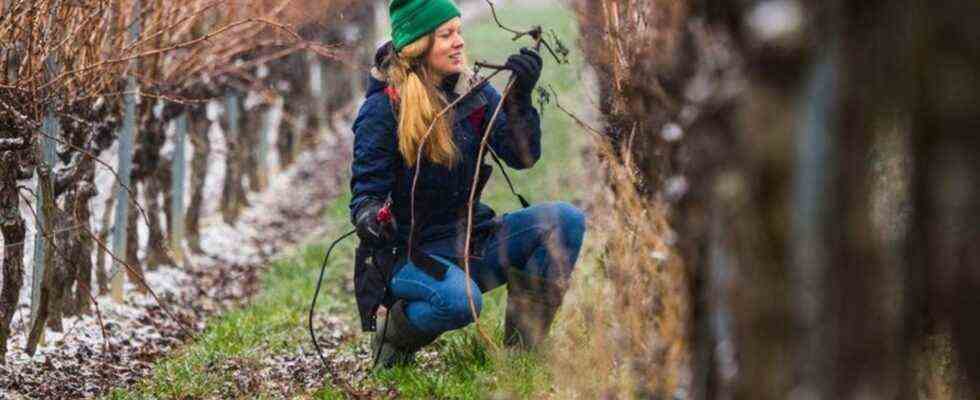wine industry
Because of fungal disease: winegrowers pay attention to “gentle cut”
Hanneke Schönhals, winemaker at the Schönhals winery, cuts the vines with electric scissors. Photo: Andreas Arnold/dpa
© dpa-infocom GmbH
The fungal disease Esca is spreading in the vineyards. Because the spores penetrate the plant via cut surfaces, the vine should be treated gently when cutting in the spring.
At the start of the working year in the vineyard, many winegrowers start pruning the vines with a new perspective.
In the past year, the fungal disease Esca has spread more and more. In order to curb them, the number of cuts on the vine should be limited as far as possible. The new process is called «soft cut». “This is a big issue for many in the industry right now,” says Rhenish-Hessian winemaker Hanneke Schönhals in Biebelnheim (Alzey-Worms district).
With the Dornfelder grape variety, around ten percent of the vines were affected by Esca, says the winemaker. The infested vines were cut out up to the grafting point, i.e. above the base with the roots. Now the winemaker hopes that young shoots will come again. The affected vines were burned to destroy the fungal spores.
“Esca has increased significantly in all German growing areas in recent years,” says Ernst Büscher from the German Wine Institute in Bodenheim near Mainz. “The fungi penetrate into the vine trunk and clog the pathways” – i.e. the central pathways for supplying the plant with moisture and nutrients.
The more the vine is stressed with interfaces, the greater the number of entry points for the fungal disease. The Italian experts Marco Simonit and Pierpaolo Sirch have therefore developed a method introduced as “gentle pruning”. The vines are cut as gently as possible, not too early and in dry weather. The aim is to keep the cuts as small as possible and not to cut into the old wood.
The Rhineland-Palatinate Chamber of Agriculture is also aware that “the Esca problem has been increasing in recent years”. In addition to the Dornfelder vine, Sauvignon Blanc is also particularly affected, says the head of the viticulture department, Markus Heil. Unlike Perenospora, the downy mildew, moisture does not play the dominant role. The Service Centers for Rural Areas (DLR) offer advice on “soft cuts” and other measures.
“It takes a lot of getting used to,” says winemaker Hanneke Schönhals. “We’re gradually thinking about it and asking ourselves: How is the flow of juice and how can we avoid larger wounds?” This must also include the courage to let the vine grow larger than has been usual up to now.

